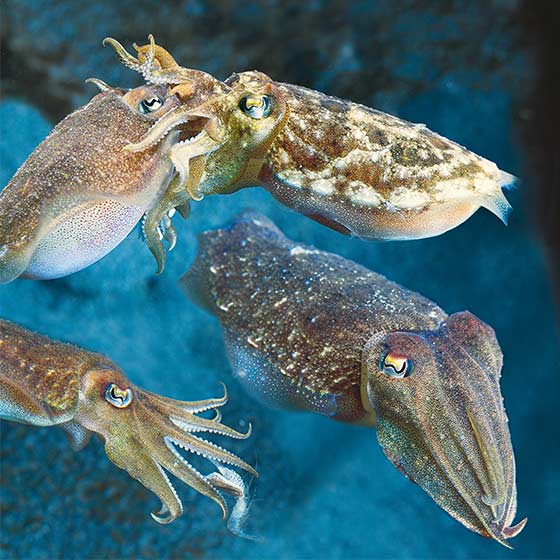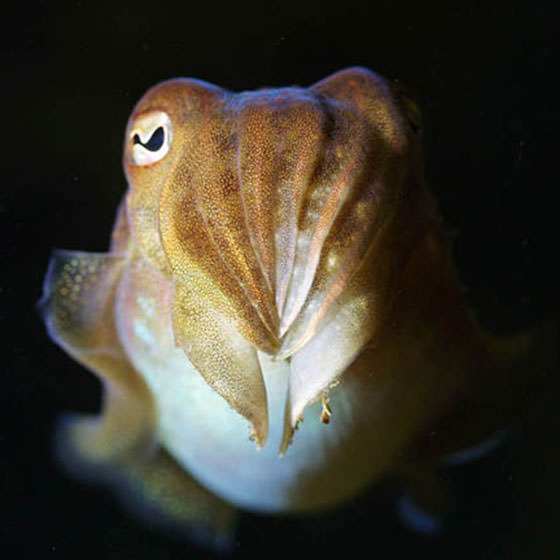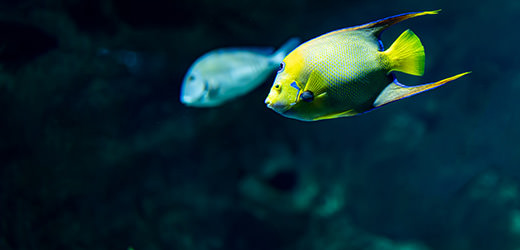Biology
Cuttlefish belong to the cephalopods group, which literally means « feet on the head ».
They each have 10 tentacles with suckers, two of which they can stretch out to capture their prey. They have a rough version of an internal shell, wrongly called a « cuttlebone », despite the fact that it’s made out of calcium. This lightweight shell made of tiny cavities allows the cuttlefish to float without having to constantly be swimming.
Cuttlefish can burrow into the sand or hide under rocky spurs. With their gift for mimicry, they easily blends in with their environment by modifying their colouring.
When faced with danger, they flee, excreting a cloud of ink to confuse their attackers.




